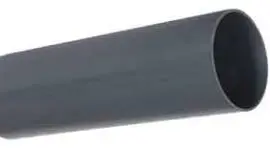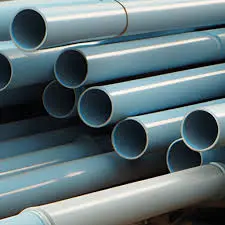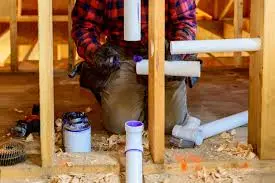Maintaining and cleaning PVC pipe ducts is crucial for ensuring their longevity and optimal performance. Proper care can prevent costly repairs and prolong the life of your duct system. This comprehensive guide provides step-by-step instructions and useful tips for maintaining and cleaning your PVC pipe ducts.
Understanding PVC Pipe Ducts

What Are PVC Pipe Ducts?
PVC (polyvinyl chloride) pipe ducts are commonly used in various applications, including HVAC systems, plumbing, and underground ductwork. They are known for their durability, resistance to corrosion, and ease of installation.
Advantages of PVC Pipe Ducts
PVC pipe ducts offer several benefits, such as:
- Durability: Resistant to chemicals and corrosion.
- Cost-Effectiveness: Lower installation and maintenance costs.
- Versatility: Suitable for various applications, including HVAC, plumbing, and fire sprinkler systems.
Regular Maintenance of PVC Pipe Ducts
Inspection and Cleaning
Regular inspection and cleaning are vital to maintain the efficiency of PVC pipe ducts.
Visual Inspection
Perform a visual inspection of your PVC pipe ducts at least once a year. Look for any signs of wear, cracks, or blockages.
Cleaning the Ducts
- Turn Off the System: Before cleaning, ensure the HVAC system or other connected systems are turned off.
- Remove the Grilles and Vents: Take off the grilles and vents to access the ducts.
- Vacuum the Interior: Use a vacuum cleaner with a long hose attachment to remove dust and debris from the ducts.
- Wipe with a Damp Cloth: For a more thorough cleaning, wipe the interior surfaces with a damp cloth. Avoid using harsh chemicals.
Using a PVC Termination Vent Screen
A PVC termination vent screen helps prevent debris, pests, and other obstructions from entering your duct system. Regularly check and clean the vent screen to ensure it remains clear.
How to Use PVC Primer and Cement
Properly using PVC primer and cement is essential for maintaining strong and leak-free joints.
Steps for Using PVC Primer and Cement
- Clean the Pipe and Fittings: Remove any dirt, grease, or debris from the pipe and fittings.
- Apply Primer: Apply PVC primer to the outside of the pipe and the inside of the fitting. Allow it to dry for a few seconds.
- Apply Cement: Apply a generous amount of PVC cement to the primed areas.
- Join the Pipe and Fitting: Quickly insert the pipe into the fitting, giving it a quarter-turn to evenly distribute the cement.
- Hold the Joint: Hold the joint together for a few seconds to ensure a strong bond.
Common Mistakes to Avoid
- Skipping the Primer: Always use primer before applying cement to ensure a secure joint.
- Insufficient Cement: Apply enough cement to cover the entire primed area.
Maintaining Underground PVC Ductwork

Importance of Regular Checks
Underground PVC ductwork requires regular checks to prevent issues such as blockages and leaks.
Inspecting for Blockages
Use a drain snake or similar tool to inspect the underground ductwork for blockages. Regularly check the entry and exit points for any debris buildup.
Ensuring Proper Drainage
Make sure the underground PVC ductwork has proper drainage to prevent water accumulation, which can lead to blockages and damage.
Cutting PVC Pipe from Inside
Sometimes, it’s necessary to cut PVC pipe from the inside, especially in tight spaces or underground ductwork.
Tools Needed
- Internal pipe cutter
- Measuring tape
- Marker
Steps to Cut PVC Pipe from Inside
- Measure and Mark: Measure the length of pipe to be cut and mark it with a marker.
- Insert the Cutter: Insert the internal pipe cutter into the pipe.
- Cut the Pipe: Rotate the cutter to make the cut. Apply steady pressure to ensure a clean cut.
Specific Applications and Maintenance Tips

Charlotte CPVC Fittings
Charlotte CPVC fittings are commonly used in plumbing systems. Regularly check these fittings for signs of wear or leaks. If any issues are found, replace the fittings promptly to avoid further damage.
Orange PVC Pipe for Fire Sprinkler Systems
Orange PVC pipes are specifically designed for fire sprinkler systems. These pipes must be inspected regularly to ensure they are free from obstructions and leaks. Regular maintenance of fire sprinkler systems is essential for safety and compliance with fire codes.
Advanced Tips for Maintaining PVC Duct Pipe Systems
Sealing and Insulating Ducts
Proper sealing and insulation of duct pipes PVC can improve energy efficiency and prevent leaks.
Must Visit: 7 Kitchen Habits That are Secretly Damaging Your Pipes
Steps for Sealing Ducts
- Clean the Ducts: Ensure the ducts are clean and dry.
- Apply Sealant: Use a high-quality duct sealant to seal any joints or gaps.
- Insulate: Wrap the ducts with insulation material to improve efficiency and reduce energy loss.
Preventive Measures
Taking preventive measures can help maintain the longevity of your PVC pipe ducts.
Regular Professional Inspections
Hire a professional to inspect your PVC pipe ducts at least once a year. They can identify and address issues that may not be visible during a DIY inspection.
Proper Ventilation
Ensure your duct system has proper ventilation to prevent moisture buildup and reduce the risk of mold and mildew growth.
Conclusion
Maintaining and cleaning PVC pipe ducts is essential for their longevity and optimal performance. Regular inspections, proper cleaning, and using the right tools and materials can help prevent costly repairs and ensure your duct system functions efficiently. By following the tips and guidelines outlined in this article, you can keep your PVC pipe ducts in excellent condition for years to come.
